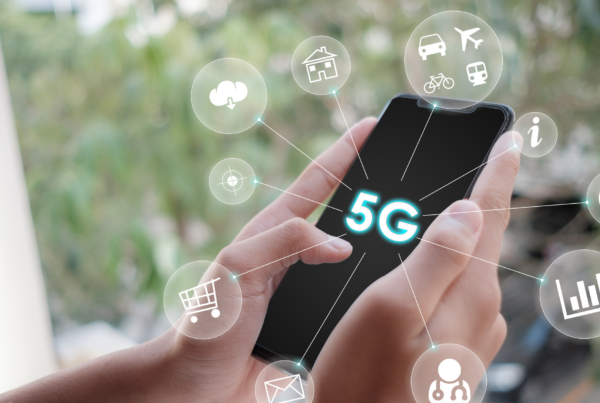The concept of the “Smart City” has been gaining traction in recent years, with cities around the world investing in technology-driven solutions to improve efficiency, sustainability, and quality of life. However, while smart cities can offer significant benefits, they often fall short of addressing the critical challenge of environmental sustainability. The world is rapidly urbanising, with over half of the global population now residing in cities [1]. This growth presents significant challenges, including environmental degradation, resource depletion, and climate change. To address these challenges, cities must embrace not only smart technologies but also sustainable practices. This blog post argues that the transition from smart cities to green cities is crucial, and telecommunications companies have a vital role to play in this process.
The Limits of Smart Cities
Smart cities leverage technology to improve efficiency, optimise infrastructure, and enhance residents’ quality of life. This includes initiatives such as:
- Smart grids: Utilising real-time data to optimise energy consumption and integrate renewable resources.
- Smart transportation: Implementing traffic management systems and promoting electric vehicles to reduce emissions.
- Smart buildings: Employing automation and sensor technology to improve energy and water efficiency.
While these advancements offer undeniable benefits, smart cities often struggle with:
- Limited focus on sustainability: Prioritising technological solutions over environmental concerns, neglecting green spaces and alternative energy sources.
- Exacerbated inequalities: Excluding marginalised communities from benefits and exacerbating existing social and economic disparities.
- Tech dependence: Relying heavily on complex technology systems, raising concerns about vulnerability to cyberattacks and maintenance costs.
Green Cities: Embracing a Sustainable Future
Green cities prioritise environmental responsibility and ecological balance alongside technological advancements. They focus on creating a healthy, liveable environment for residents by:
- Promoting renewable energy: Integrating solar, wind, geothermal, and other renewable energy sources into the city’s energy grid.
- Enhancing energy efficiency: Utilising energy-efficient buildings, appliances, and transportation systems to minimise energy consumption.
- Building green infrastructure: Creating parks, gardens, green roofs, and green walls to improve air quality, regulate temperature, and boost biodiversity.
- Adopting circular economy principles: Minimising waste and maximising resource reuse through innovative recycling and waste management strategies.
- Prioritising sustainable transportation: Encouraging walking, cycling, and public transportation while promoting electric vehicles and low-emission options.
Telecommunications: A Key Player in the Green City Transition
Telecommunications companies have a unique and critical role to play in the transition to green cities. They possess the infrastructure, technology, and expertise to:
- Develop and deploy smart grids: Enabling efficient energy management, integration of renewable resources, and demand-side response programs.
- Support smart transportation: Implementing intelligent traffic management systems, promoting electric vehicles through charging infrastructure, and facilitating real-time information sharing.
- Connect and monitor green infrastructure: Utilising sensors and IoT technologies to monitor environmental conditions, optimise resource use, and improve green space management.
- Empower citizens: Provide residents with access to information, tools, and services that encourage sustainable practices and promote environmental awareness.
- Facilitate collaboration: Connecting stakeholders across different sectors, enabling knowledge sharing, and fostering cooperation on green city initiatives.
Beyond Infrastructure: Telecommunications as a Change Agent
Telecommunications companies can go beyond infrastructure development and leverage their influence to:
- Advocate for sustainability: Promote policy changes that incentivise sustainable practices and invest in green technologies.
- Support green businesses: Partner with and invest in companies that develop and implement green solutions.
- Educate and engage communities: Raise awareness about environmental issues and promote sustainable lifestyles through various communication channels.
- Promote transparency and accountability: Sharing data and information on environmental impact and progress towards sustainability goals.
Case Studies: Leading the Way to Green Cities
Several cities worldwide are demonstrating exemplary leadership in transitioning towards green urban environments [2]. They are actively implementing innovative solutions and leveraging the power of telecommunications (directly and indirectly):
- Barcelona, Spain: Leading global efforts with projects such as a city-wide free Wi-Fi network and a real-time energy management system. With over 20,000 active sensors and the innovative CityOS platform, Barcelona aims to enhance efficiency in areas like transportation and waste management, and it plans to achieve emissions-free public transportation by 2025.
- Singapore: Backed by a S$50 million investment, Singapore is poised to lead as Asia’s premier smart city, with initiatives like the Green Building Masterplan targeting 80% of buildings going green by 2030. As part of the Smart Nation initiative, Singapore is developing innovative apps, pursuing sustainability goals, and envisions a vehicle-free smart city with over 42,000 eco-homes in the future.
- Seoul, South Korea: The city’s smart transformation extends to the well-being of senior citizens, employing environmental sensors to ensure their safety by detecting anomalies and proactively alerting care workers or emergency services, while future plans include an AI detective for crime pattern detection and a goal of powering all buildings with solar panels by 2030, ultimately transitioning to entirely renewable energy.
- Copenhagen, Denmark: The city has evolved into an environmentally conscious smart city with a commitment to becoming the world’s first carbon-neutral capital by 2025. Notable initiatives, including smart street lights, sustainable transportation, and innovative apps for journey planning and parking, contribute to the city’s eco-friendly transformation. At the same time, the use of IoT technology in various systems enhances data-driven decision-making for urban planning and development.
Conclusion
The transition from smart cities to green cities requires a collective effort. By leveraging their unique capabilities, telecommunications companies can become powerful catalysts for this crucial transformation. It is time to move beyond mere technological advancement and embrace a future where environmental responsibility goes hand-in-hand with technological innovation. Let us collaborate to build a future where our cities are not just smart but also green, sustainable, and liveable for generations to come.
[1] https://www.worldbank.org/en/topic/urbandevelopment/overview#:~:text=Today%2C%20some%2056%25%20of%20the,people%20will%20live%20in%20cities. [2] https://caburntelecom.com/top-smart-cities/









